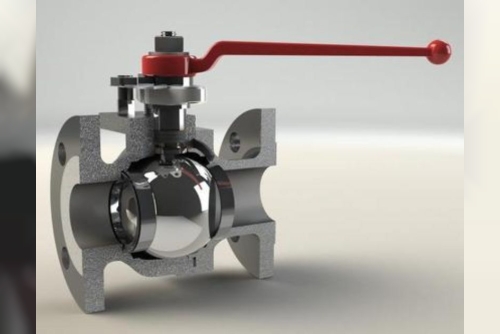Valves are mechanical devices that open, close, or partially obstruct passages to control the flow of fluids like liquids, gases, and slurries. They are essential components in a variety of systems, including industrial processes, transportation, utilities, and home plumbing.
The fundamental role of valves is to manage the flow of fluids inside a system, either by providing precise flow rate control or by entirely stopping the flow when necessary. Valves come in a variety of designs and combinations, each adapted to a specific use and operating environment.
I. IntroductionA. Definition of Valves
A device in a pipe or tube that controls the flow of air, liquid, or gas, allowing it to move in only one direction.
B. Importance in Various Industries
Valves play an essential function in the manufacturing industry, regulating the flow of liquids, gases, and even solids through pipelines and other processing systems. The value of valves cannot be emphasised, as they provide precise control, increase efficiency, and ensure safety across a wide range of industrial operations. These devices help to start, stop, regulate, and direct the flow of chemicals, adding considerably to smooth industrial processes.
II. Types of ValvesA valve is a component of a piping system that controls the flow of media through it. This control is performed through the manipulation of an obstructer within the valve. Actuated valves use mechanical devices known as "actuators" to activate the valve via a power source such as compressed air or electricity. Most actuated valves can also be operated manually or with a manual override.
Rotary Valves
These valves are based on the rotating motion of the flow obstructer. In most circumstances, this rotation is limited to 90 degrees (one quarter-turn); nevertheless, there are valves that function with a greater degree of rotation and have more than two settings that are employed in normal operation. True quarter-turn valves are entirely closed at 0˚ and completely open at 90˚. Quarter-turn valves include butterfly valves, plug valves, and ball valves.
Linear Valves
There are two types of linear valves: rising stem (multi-turn) and axial. While both valve types rely on the flow obstructer's linear motion, their design and operation differ significantly.
Multi-turn rising stem valves move the obstructer by rotating a threaded rod (stem) that is attached to it. Multi-turn valves include gate valves, globe valves, pinch valves, diaphragm valves, and needle valves. These valve types are widely utilised in flow control applications.
Axial valves use pneumatic or electromagnetic force to move the obstructer along an axis. Examples include coaxial valves and angle seat valves. These valves are usually quick acting and utilised only in on/off process applications.
Plug Valves
The basic design of a plug valve is nearly identical to that of a ball valve, with the exception of the shape of the obstructer utilised. In this scenario, the ball is substituted with a slightly tapered cylinder. This cylinder functions similarly to a ball valve, with a bore that allows it to open in one position and close when rotated 90˚.
Plug valves have features that make them the best choice for specific applications. One advantage is that they do not have any spaces or cavities where media could become trapped. Another advantage is that they may be adjusted to correct leaks that may occur over time, whereas a ball valve must be repaired or replaced.
Plug valves, like ball valves, are primarily employed in on-off applications. Plug valves are commonly employed in extreme service applications such as refineries and chemical plants, where the operating environment is corrosive.
Ball Valves
Quarter-turn Two-way ball valves are the most prevalent form of process control valve. They are two-way (inlet and outlet) valves with two positions (open and closed) that are used to turn off or isolate a system, a loop, or a component within it. A ball valve's fundamental design features a ball as the obstructer wedged between two cup-shaped seals known as "seats". Typically, the ball has a straight bore through it. When the valve is open, media flows through the bore. When the ball is spun 90˚, the sides of the ball block the flow of media and entirely fill the space in the seats.
Three, four, and even five-way ball valves are also available, though they are far less frequent. The course on Ball Valves covers several sorts of ball valves.
Ball Valves are ideal for on/off applications. Throttling is conceivable, but not the best application for most ordinary ball valves. Throttling can be accomplished using specialty ball valves.
Valves Manufacturer in Middle EastPiping projects is a leading Valves Manufacturer in Middle East. Valves are mechanical components that regulate the flow and pressure within a system.They are crucial for controlling the flow of liquids or gasses in pipes and other applications.
There are various valves, each built for a certain purpose and incorporating unique features for other applications. Valves are critical for the smooth and controlled operation of many industrial processes and systems. PipingProjects.ae is a top Valves Supplier in Middle East.
PipingProjects.ae is a well-known Valves Supplier in Dubai. We supply valves to various cities and regions, such as Abu Dhabi, Dubai, Sharjah, Ajman, Umm Al Quwain, and Fujairah.We are a reliable supplier in the UAE and surrounding countries.
Our valves are exceptional, and we are the preferred supplier of high-quality piping solutions in the Middle East. We stand for on-time deliveries as we are the top Valves Manufacturers in UAE. PipingProjects.ae is a leading Valves Supplier in Manufacturer in Dubai. Our products are available in a variety of sizes to meet different applications and needs.
For More Detail
Website: pipingprojects.ae
Product: Valves Supplier in UAE
Other Product: Metallic Gasket Manufacturer in Middle East.












